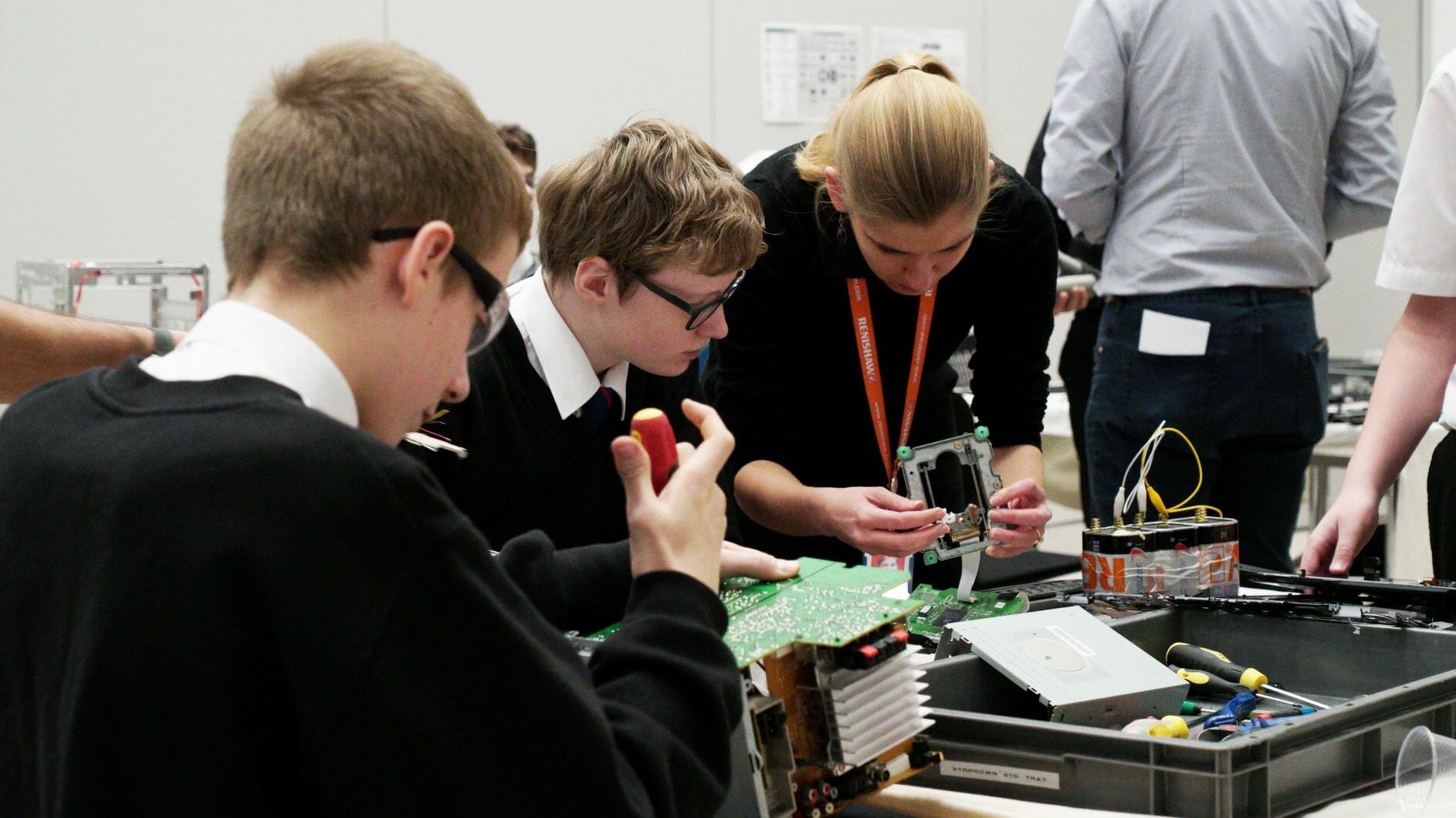The science, technology, engineering and maths (STEM) skills gap in the UK is no secret, and it is also a hugely complex challenge to fix. To help address the issue, researchers have developed a model for increasing the uptake of STEM careers; science capital. So, how can we increase young people’s science capital, and win their hearts and minds to consider a career in STEM? Here Rebecca Bound, Education Outreach Officer at global engineering technologies company, Renishaw, shares her guidance on how companies can help inspire the next generation of engineers, using the science capital model.
STEM has a leaky pipeline. Though many children report enjoying their science lessons, many do not see science as relevant to their lives or “for me”. This is particularly apparent in women, minority ethnic and working-class communities, where we are still seeing under-representation. At least, that’s what BP, King’s College London and the Science Museum Group found in a ten-year longitudinal research project, ASPIRES, which tracked young people’s career aspirations.
What is science capital?
Science capital can be defined as the sum of all science related knowledge, attitudes, experiences and resources that an individual has. Researchers describe science capital as a metaphorical rucksack, with each science experience adding to the volume of the individual’s capital and the likelihood the child sees science as “for them” and chooses to follow a STEM career. With only five percent of students found to have high science capital, what more can industry do to increase it?
Programmes have already been set up to monitor the impact of regular STEM activities on groups of young people over time. The Future Brunels pilot programme run by the SS Great Britain Trust, for example, measures students’ interest in STEM over five years, and the results show that participants recognised new possibilities for their own career aspirations and future selves.
Science capital comes from many sources; school, home, family, extracurricular activities, employer outreach and more. Researchers have developed a science capital focussed toolkit for schools to use, but engineering businesses also have a role to play in supplementing this.
The role of the employer
No employer can solve the skills gap single-handedly, nor can they be entirely responsible for a cohort’s science capital. What they can do is provide young people with a positive experience of a STEM environment, to provide additional types of science capital from another influence.
Renishaw, for example, runs a STEM Outreach programme of activities, from school assemblies, to workshops and work experience, with children and young people predominantly from South Wales, Gloucestershire, Bristol and South Gloucestershire. Whilst we are involved in supporting some ongoing programmes, like Future Brunels, the majority of our engagement with individual students is on an ad-hoc basis. For example, we work with a local school that, each year, will participate in a STEM workshop for all its Year 8 pupils; so a new cohort each year.
Every engineering business will have something to offer young people, but there are things to consider before establishing an outreach programme. It’s important that inputs into science capital aren’t repeated, as going over the same topics may actually be off-putting. Outreach work also needs to be carefully tailored to the age group and skill level, so it is accessible, yet stimulating.
Renishaw has split its outreach model into three groups; engage (years 5 and 6), embed (years 7 to 9) and employ (years 10 to 13). King’s College Research has also shown that early intervention has lots of benefits, so we have also done story readings for children in years 1 and 2. Each stage of our programme is different, moving from initial introductions to create an interest and a spark, to developing the messages and explaining the role of an engineer in society, to a more future and careers focussed programme.
Think about your company’s area of expertise, research the curriculum and establish what else is on offer in your local area, to help identify specific gaps you can plug. A good starting point is to look at what children’s science museums or education centres, like We The Curious in Bristol or Techniquest in Cardiff, have on offer. It could be a video stream during an assembly, a careers talk or a workshop you run, that can be the difference between a young person becoming an engineer or not.
Making a long-lasting impression
Even if you are engaging with a particular cohort only once, there are ways to make the impact of the session go beyond just attending on the day. Firstly, it is important that the activities are enjoyable and memorable, but there should also be a take-home message to provide context. This can shift the thought process from “that was fun!” to “that was fun, and I want to be an engineer when I grow up!”.
We find it helps to connect the STEM activity to their everyday lives, so they can see how it is applicable by, for example, running Technology Teardown workshops to reveal what is on the inside of common electronics products. Young people use technology all the time and highlighting the detail and design behind it can help them see the wider relevance. Alternatively, running workshops on topical trends and buzzwords, like 3D printing, can help keep young people engaged.
One thing we have seen a lot of success with, is where children or young people can make something to take home with them. For example, designing a key ring in CAD and printing it using 3D printing, or making simple homopolar motors they can take apart and rebuild, means they can show their parents and siblings what they have learnt. This increases the number of people’s science capital one session can influence; we cannot underestimate the influence of family on an individual’s career choices.
The impact of engagement
Renishaw decided to make an investment in education outreach, not just to inspire potential future recruits, but also to benefit its local area and supply chain, who may not currently be able to invest resources themselves. We have already seen previous work experience and open day participants join Renishaw as apprentices, which is an encouraging sign.
A co-ordinated effort from across the STEM sectors is needed to address the skills crisis. Every little helps, so, if your company is able to, researching what outreach you could offer and reaching out to local schools could provide the spark a child needs to decide that, when they grow up, they want to be an engineer.
For further information on Renishaw’s education outreach programme, visit https://www.renishaw.com/en/education-outreach.








